Unless you live under a rock, you may have heard that in 2015/16 we are supposed to be experiencing an El Niño winter.
The term “El Niño” gets tossed around quite a bit and some of us have come to accept it without even fully understanding what it means. For students coming to experience High Trails, an El Niño winter means waterproof gear, long hikes through the snow, shelter building, (and if you’re lucky) throwing snowballs at your favorite instructor.
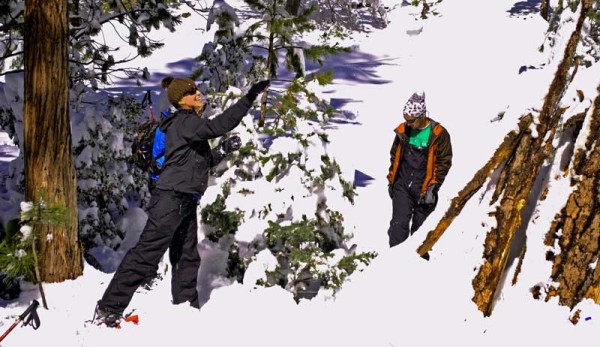 But what is the bigger picture here? What causes these El Niño winters, and how does it affect us in the San Bernardino Forest as well as the greater Southern California area as a whole? Well, these questions and many more are what we are here to discuss.
But what is the bigger picture here? What causes these El Niño winters, and how does it affect us in the San Bernardino Forest as well as the greater Southern California area as a whole? Well, these questions and many more are what we are here to discuss.
First and foremost, why is there so much excitement surrounding the El Niño events of the southwest?
Southern California is currently experiencing a record breaking drought and two of California’s wettest winters on record (1983 and 1998) arose during the strongest El Niño events in recent memory. In other words, El Niño seems to be the answer to avoiding the dryness and wildfires we experienced all last summer.
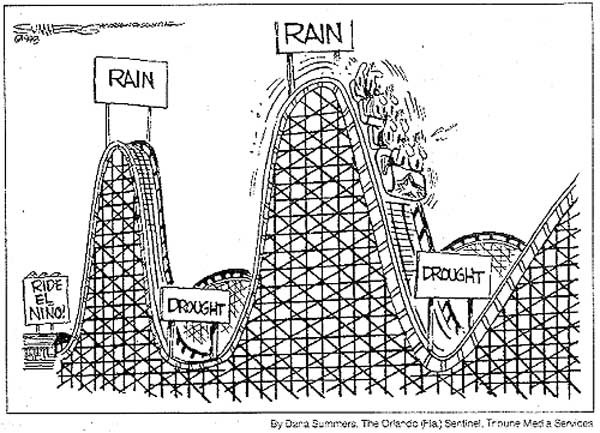 However, even if we understand that El Niño winters can bring us some much needed relief to our water table, what is the cause?
However, even if we understand that El Niño winters can bring us some much needed relief to our water table, what is the cause?
The simplest explanation lies with changing weather patterns and an increase in the temperature of the Pacific Ocean. The increase in ocean temperatures causes tropical storms which not only strengthens but also straightens a jet stream that ordinarily lies on the eastern part of the Pacific Ocean. The jet stream exists over the Gulf of Alaska low-pressure zone and it is what causes greater precipitation to fall in California that would ordinarily fall in other locations.
 So how does this winter stack up against those in previous years? Do we have enough water to keep us going for now?
So how does this winter stack up against those in previous years? Do we have enough water to keep us going for now?
Unfortunately, this year we have not received as much precipitation as originally anticipated. Although the northern half of California has experienced enough precipitation to bring the best Sierra Nevada snow pack in years, Southern California has still not experienced enough precipitation to bring relief to our aquifers.
Unlike the Sierras, the San Bernardino Mountains have not accumulated much of a snow pack. The snow pack is responsible for providing water to large reservoirs in dire watersheds that keep water flowing through Southern California well into the summer months. Now that winter is nearing its end, many are concerned that this El Niño winter would not bring us the precipitation Southern California so desperately needs.
Have no fear, for I have some good news. Traditionally a large fraction of El Nino’s precipitation tends to fall during the March and April months, meaning there still might be enough rainfall to bring long-term drought relief.
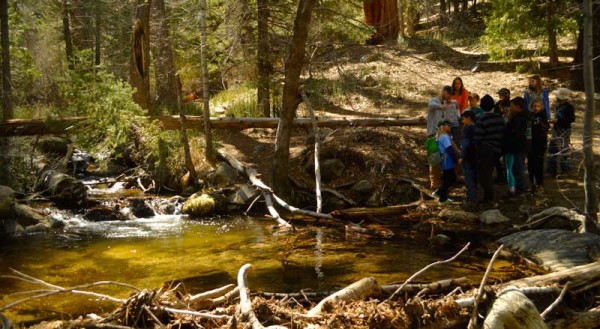 So is that it? Is the drought finally going to be over?
So is that it? Is the drought finally going to be over?
Not quite. According to Mike Halpert, deputy director of NOAA’s Climate Prediction Center, “One year of above-average rain and snow is unlikely to remove four years of drought”. In many parts of Southern California, the water table has dropped an average of one foot each year since the 1950’s. This is because many parts of southern California’s drier ecosystems have grown beyond their natural means.
Simply put, there are too many people living and changing the environment in an ecosystem not originally built to handle it. So even before the drought began, there really was not enough water to go around. The drought has only added to Southern California’s water problems. Because of this, El Niño is a welcomed change of pace, however it is not the answer to all of our troubles.
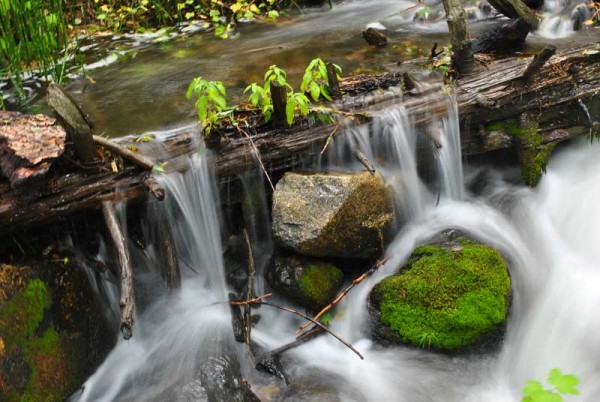 Can El Nino be bad for us?
Can El Nino be bad for us?
Keep in mind, all this precipitation can cause additional issues to the environment. Hard-packed ground typically causes rain to run off instead of soaking into parched soil. Last summer’s fires left entire mountainsides scorched and vulnerable to landslides. With heavy precipitation, the likelihood of major landslides increases dramatically due to barren mountainsides. The landslides are an example of ecological pollution that can contaminate the very waterways we are hoping to replenish.
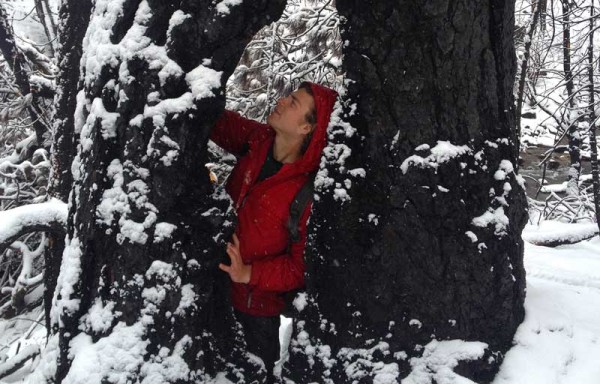 Wipe Up
Wipe Up
The take-away message here is El Niño is still most likely going to bring us an above-average season in terms of precipitation, and the presence of a solid snow pack in the Sierra Nevada Range should bring some much needed drought relief to California.
However, we will still be facing issues surrounding long-term drought primarily stemming from our incredibly low water table. And even if El Niño brings us the precipitation we are hoping for, it still might cause some serious landslides. At least now we all know where El Niño comes from and why it affects us the way it does.
My advice is to enjoy the snow while it is here. Build an igloo, make a snow angel, go skiing, and get cold on a long winter hike. Just be sure to take a short shower once you are finished getting dirty.
At High Trails Outdoor Science School, we literally force our instructors to write about elementary outdoor education, teaching outside, learning outside, our dirty classroom (the forest…gosh), environmental science, outdoor science, and all other tree hugging student and kid loving things that keep us engaged, passionate, driven, loving our job, digging our life, and spreading the word to anyone whose attention we can hold for long enough to actually make it through reading this entire sentence. Whew…. www.dirtyclassroom.com

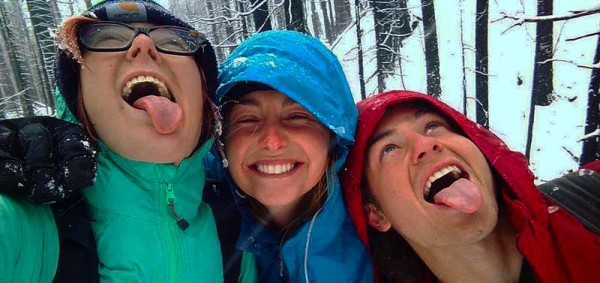
Comments are closed.